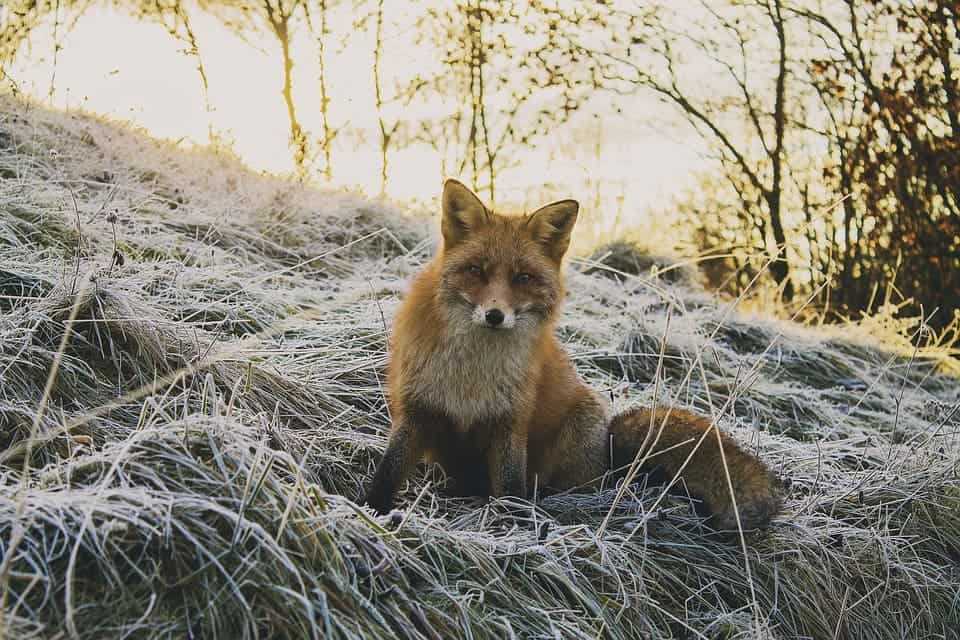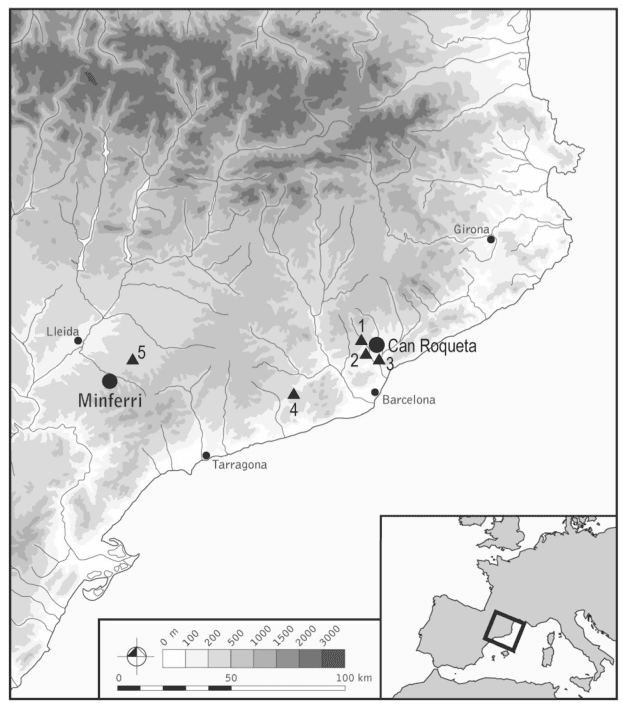
Image via Pixabay.
By the third and second millennia BC, humans in today’s Spain often included animals in their tombs. The practice left us evidence of fox domestication by this time.
If you ever wanted a fox for a pet (be honest, we all do), you’ll be really envious of the Iberian peoples of the Early- to Middle-Bronze Age. Four foxes and a large number of dogs found at the Can Roqueta (Barcelona) and Minferri (Lleida) sites showcase their widespread practice of burying people alongside domestic animals. The findings also give us a glimpse into how these people and their animals lived, as well as their close relationships.
Foxy fur babies
Last week we saw how stone-age communities in roughly the same area of modern Spain included dogs in their funeral practices. Today, let’s take a look at how these practices evolved over time.
“We discovered that in some cases the dogs received a special kind of food. We believe this is linked to their function as working dogs. Besides, one of the foxes shows signs of having already been a domestic animal in those times,” says Aurora Grandal-d’Anglade, first author of the study.
Human remains found at these sites were buried in large silos along with dogs and a few foxes, the team reports. Carbon and nitrogen isotope analysis (performed on bone collagen), in addition to several other methods, allowed the researchers to piece together the diet of both the animals and their owners. The team looked at 37 dogs, 19 domestic ungulates, and 64 humans.

Image credits Grandal-d’Anglade et al., 2019, Arch. and Anth. Sciences.
The dogs tended to have comparable diets to that of the humans. The foxes had a more varied menu: in some cases, it closely resembled the dogs’, while others ate pretty much what wild animals with little human contact would eat.
Such diets suggest that the animals were already domesticated and relied on humans for food. Further evidence of the close ties these handlers formed with their pets comes from the remains of a fox retrieved at Can Roqueta.
“The case of the Can Roqueta fox is very special, because it is an old animal, with a broken leg. The fracture is still in its healing process, and shows signs of having been immobilized (cured) by humans. The feeding of this animal is very unusual, as it is more akin to a puppy dog’s. We interpret it as a domestic animal that lived for a long time with humans,” Grandal explains.
Some larger dogs — in particular those found at Con Roqueta — seem to have been fed a cereal-rich mix, as was at least one fox involved in the study. The team also reports findings signs of spinal column disorder in these specimens, suggesting they were used as pack animals. Their diet, then, directly reflected their role in the community — it’s not easy being a pack animal, and a high-carbohydrate diet gave them the calories needed to perform the task.
“It may seem strange that dogs were basically fed with cereals, but this was already recommended by the first-century Hispano-Roman agronomist Lucius Junius Moderatus Columella, in his work De re rustica,” says Silvia Albizuri Canadell, an archaeozoologist at the University of Barcelona and co-author of the study.
Unsurprisingly, other animals such as cows, sheep, or goats found in the graves had a herbivorous diet. Their role was likely to provide humans with food (milk, meat) or materials such as leather or wool — not labor. Factor in that the horse wasn’t known in these societies until much later, and the role of dogs as pack animals becomes more understandable. Dogs also served as an integral part of their communities’ economic pursuits by guiding herds and offering protection from wild animals. They likely obtained animal proteins from human leftovers.
In general, the team adds, both humans and dogs likely ate mostly plant matter, with some (but not a lot of) animal proteins, but “not necessarily much meat; they could be, for example, derived from milk,” according to Grandal. The men of these communities do stand out as incorporating more meat in their diets compared to women and children. Dogs’ diets were more similar to that of women and children, the team also found, suggesting that they were more linked to […] domestic environments.”
“The characteristics of dogs include their great intelligence, easy trainability and, undoubtedly, their defensive behaviour. As if that were not enough, this animal was used until the nineteenth century AD in North America, Canada and Europe for light transport on its back and for dragging carts and sleds. It also functioned as a pack animal on the Peninsula during the Bronze Age,” says co-author Albizuri Canadell.
Some archaeological specimens from North America also show bone disorders that stem from the pulling of ‘travois’ (a type of sledge). Similar pathologies have also been recently identified in the vertebrae of Siberian Palaeolithic dogs.
All in all, the findings illustrate the role dogs played as transport animals in the first migrations and human movements through glacial Europe. These animals likely played a fundamental and much more important role in their communities than believed until recently, the team writes.
Animals may have also served as a type of status symbol. The team found significant variation in the funeral treatment of different members of the studied communities. In one case, the team found “the body of an old man with the remains of a whole cow and the legs of up to seven goats,” while a young woman was buried with “the offering of a whole goat, two foxes, and a bovine horn.” Yet another individual uncovered in a different funeral complex was laid to rest with the whole bodies of two bovines and two dogs.
“We still don’t know why only a few people would have had the right or privilege to be buried with this type of offering, unlike what happens with the vast majority of burials,” explains co-author Ariadna Nieto Espinet.
“[…] these could be an indicator of the wealth of the deceased individual or of his clan or family,” she argues. “It seems that species such as bovines and dogs, two of the most recurring animals in funeral offerings, are those that might have played a fundamental role in the economy and work as well as in the symbolic world, becoming elements of ostentation, prestige and protection”.
The paper “Dogs and foxes in Early-Middle Bronze Age funerary structures in the northeast of the Iberian Peninsula: human control of canid diet at the sites of Can Roqueta (Barcelona) and Minferri (Lleida)” has been published in the journal Archaeological and Anthropological Sciences.


